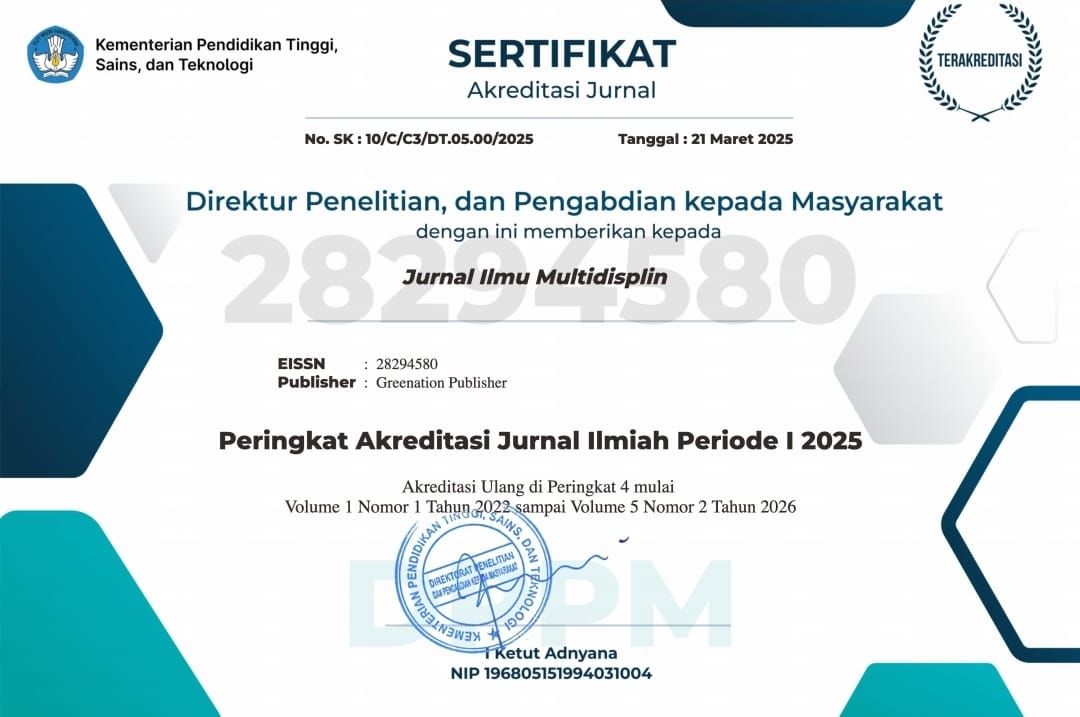Konstruksi Yuridis terhadap Pertimbangan Majelis Hakim dalam Putusan Nomor 46/Pid.Sus/2021/Pn.Srg berdasarkan Peraturan Perundang –Undangan
DOI:
https://doi.org/10.38035/jim.v2i2.284Keywords:
Construction, Juridical, Judge's Consideration, Money Laundering CrimeAbstract
The crime of money laundering (TPPU) does not stand alone because the assets that are placed, transferred, or diverted by means of integration are obtained from criminal acts, with other criminal acts that precede it (predicate crime). There are twenty-six types of predicate crimes obtained from the proceeds of TPPU assets as stipulated in Article 2 Paragraph (1) of Law No. 8 of 2010. Basically these activities consist of three steps which each stand alone but are often carried out together as contained in the case with Decision Number 46/Pid.Sus/2021/Pn. Srg. This study uses a normative juridical research method using a statutory approach. Based on the results of the research, it can be seen that the juridical construction is considered by the judge in deciding case number 46/Pid.Sus/2021/Pn. Srg. When viewed based on legal principles, the application of these articles is appropriate for the criminal acts committed by the defendants, but based on the principle of justice, the decisions issued by the Panel of Judges are deemed unable to fulfill a sense of justice.
References
Arto, Mukti, Praktek Perkara Perdata Pada Pengadilan Agama, Cet V, Yogyakarta: Pustaka Pelajar, 2004
Indrati, Maria Farida, Perkuliahan Ilmu Perundang-undangan, Jenis, Fungsi, dan Materi Muatan, Yogyakarta: Kanisius, 2007
Kelsen, Hans, Teori Hukum Murni, Bandung: Nusa Media, 2014
Kusnardi, Moh. dan Harmaily Ibrahim, Pengantar Hukum Tata Negara Indonesia, Jakarta:
Laminating, P.A.F., Dasar-Dasar Hukum Pidana Di Indonesia, Jakarta: Sinar Grafika, 2014
Latief, Mujahid A., Kebijakan Reformasi Hukum: Suatu Rekomendasi (jilid II), Jakarta: Komisi Hukum Nasional RI, 2007
Maramis, Frans Hukum Pidana Umum dan Tertulis di Indonesia, Jakarta: PT RajaGrafindo Persada, 2013
Mertokusumo, Sudikno, Mengenal Hukum: Suatu Pengantar, Yogyakarta: Liberty, 2007
Nasution, Muhammad Syukri Albani, Hukum dalam Pendekatan Filsafat, Ctk. Kedua, Jakarta: Kencana, 2017
Natsir, Asnawi, M., Hermeneutika Putusan Hakim, Pendekatan Multidisipliner dalam Memahami Putusan Peradilan Perdata, Yogyakarta: UII Press, 2014
Poerwadarminta, W.J.S. Kamus Umum Bahasa Indonesia, Jakarta: Balai Pustaka, 1999
Prasetyo, Teguh, Hukum Pidana, Jakarta: PT RajaGrafindo Persada, 2013
Remmelink, J., Pengantar Hukum Pidana Materiil 3: Hukum Penitensier. Yogyakarta: Penerbit Maharsa, 2017
Rhiti, Hyronimus, Filsafat Hukum Edisi Lengkap (Dari Klasik ke Postmodernisme), Ctk. Kelima, Yogyakarta: Universitas Atma Jaya, 2015
Santoso, M. Agus, Hukum, Moral & Keadilan Sebuah Kajian Filsafat Hukum, Ctk. Kedua, Jakarta: Kencana, 2014
Soewarsono dan R. Mathovani, Pemberantasan Tindak Pidana Pencucian Uang di Indonesia, Jakarta: Malibu, 2004
Sutedi, Adrian, Tindak Pidana Pencucian Uang, Bandung: Citra Aditya Bakti, 2008,
Waluyo, Bambang, Penegakan Hukum Di Indonesia, Jakarta: Sinar Grafika, 2016
T. Wijayanta dan Firmansyah, Perbedaan Pendapat dalam Putusan-Putusan Pengadilan di Pengadilan Negeri Yogyakarta dan Pengadilan Negeri Sleman. Jurnal Mimbar Hukum, Vol. 23 No. 1, hlm. 38-60, 2011
Downloads
Published
How to Cite
Issue
Section
License
You are free to:
- Share— copy and redistribute the material in any medium or format
- Adapt— remix, transform, and build upon the material for any purpose, even commercially.
The licensor cannot revoke these freedoms as long as you follow the license terms.
Under the following terms:
- Attribution— You must give appropriate credit, provide a link to the license, and indicate if changes were made. You may do so in any reasonable manner, but not in any way that suggests the licensor endorses you or your use.
- No additional restrictions— You may not apply legal terms or technological measures that legally restrict others from doing anything the license permits.
Notices:
- You do not have to comply with the license for elements of the material in the public domain or where your use is permitted by an applicable exception or limitation.
- No warranties are given. The license may not give you all of the permissions necessary for your intended use. For example, other rights such as publicity, privacy, or moral rightsmay limit how you use the material.




























